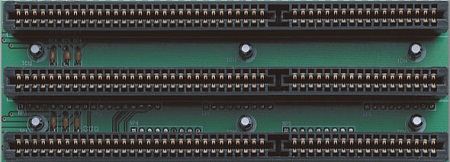The Industry Standard Architecture or ISA (Pronounced as separate letters or as eye-sa) bus began as part of IBM’s revolutionary PC/XT and PC/AT released in 1981. However, it was officially recognized as “ISA” in 1987 when the IEEE (Institute of Electrical and Electronics Engineers) formally documented standards governing its 16-bit implementation. AT version of the bus is called the AT bus and became a de facto industry standard.
We’ll be covering the following topics in this tutorial:
History
ISA stands for Industry standard architecture. It was the original IBM expansion bus and initially no standard was assigned to it. Its first version was the 8 bit bus and it ran at the speed of about 7 MHz.
In 1984,with the advent of PCAT (Intel 286),the bus width is increased to 16bits and thefrequencysuccessively6 to 8 MHz, 8.33 MHz and finally, providing a theoretical maximum of 16MB /s(in practiceonly8 MB/ sasa cycle of two was used for addressing).
The second generation of PC’s used 16 bit ISA expansion bus which also ran at the same speed i.e. 7 MHz initially. The later cards allow speed of 8.33 MHz for the 16 bit ISA bus. Nowadays the I/O devices are much faster than their speed but still the ISA connectors are usually included in PC’s to make them is backward compatible with the slower ISA cards.
Current motherboards no longer include ISA bus,PCI bus replaced by the faster and Plug & Play.

ISA bus architecture
ISA bus architecture is the basis of personal computer. 8-bit ISA bus is used in single user systems with 80386 and 80486 processors. There are 24 address lines and ’16 data lines in it. It operates at 8 MHz and 2 to 8 clock cycles are needed to transfer data. The data transfer rate of the system is less when 8-bit ISA bus is used with 32 bit processor having 32 bit address and data bus. So, 16 bit ISA bus is used to transfer data. Many peripherals such as disk controller, printer, and scanner can be connected to ISA bus.
 Dinesh Thakur holds an B.C.A, MCDBA, MCSD certifications. Dinesh authors the hugely popular
Dinesh Thakur holds an B.C.A, MCDBA, MCSD certifications. Dinesh authors the hugely popular